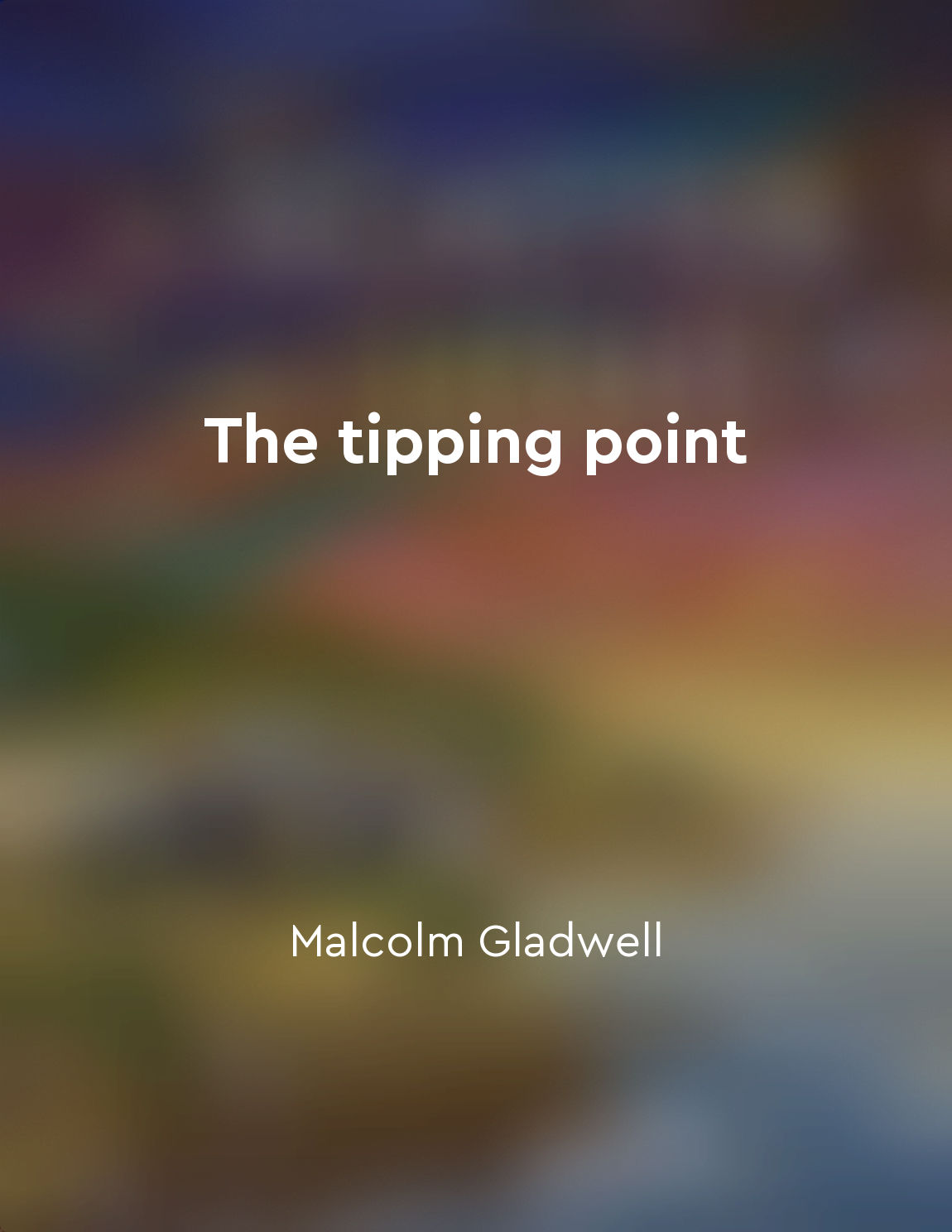Small changes can lead to significant shifts from "summary" of The tipping point by Malcolm Gladwell
The tipping point is that magic moment when an idea, trend, or social behavior crosses a threshold, tips, and spreads like wildfire. This book explores how little things can make a big difference, how small changes can have a huge impact on the way people think and behave. It's all about understanding the power of context, the environment in which people operate, and how even the smallest adjustments can lead to significant shifts in behavior. Take, for example, the Broken Windows theory, which suggests that small acts of vandalism and disarray can create an environment that encourages more serious crimes. By fixing those broken windows and cleaning up the graffiti, a neighborhood can be transformed into a safe and orderly place. Similarly, the Power of Context highlights how subtle changes in the environment can influence people's decisions and actions, sometimes in unexpected ways. The Law of the Few introduces the idea that a select few individuals, known as connectors, mavens, and salesmen, can have a disproportionate impact on spreading ideas and trends. These influencers play a crucial role in shaping social dynamics and driving change. By targeting these key players and leveraging their networks, small changes can be magnified and lead to significant shifts in behavior and attitudes. Moreover, the Stickiness Factor emphasizes the importance of crafting messages and products that resonate with people on a deep level. By creating something memorable, engaging, and compelling, even the smallest details can have a lasting impact and drive meaningful change. This concept underscores the power of storytelling, emotional connection, and simplicity in capturing people's attention and driving action.- The tipping point is all about recognizing the power of small changes and understanding how these seemingly minor adjustments can spark major transformations. By paying attention to context, influencers, stickiness, and other key factors, we can unlock the potential for significant shifts in behavior, attitudes, and outcomes. Ultimately, it's about harnessing the power of the little things to create big waves of change in our world.
Similar Posts

Behavioral consistency is a powerful motivator
When we behave in a certain way, we tend to be motivated to act consistently with that behavior in the future. This phenomenon ...
Being genuine and sincere fosters trust and credibility
When we are genuine and sincere in our interactions with others, we are able to build trust and credibility. This is because au...
The power of persuasion is rooted in psychological principles
The power of persuasion is deeply embedded in fundamental psychological principles that govern human behavior. By understanding...

Embracing constraint fuels creativity
Constraints are often seen as roadblocks to creativity, limitations that stifle our ability to think outside the box. But what ...
Provide value to your audience
When it comes to building relationships with your audience, one of the most important things you can do is provide value. This ...
Creating scarcity can increase the perceived value of a product or service
Creating scarcity is a powerful tool that marketers use to make their products or services more desirable. When something is sc...
Understanding cognitive biases can help navigate decisionmaking processes effectively
Cognitive biases are those mental shortcuts that our brains take in order to make decisions quickly and efficiently. However, t...

Consumers are constantly seeking out stories that validate their worldview
Consumers are not just looking for products or services to fulfill their needs - they are looking for stories that align with t...
Leverage usergenerated content for authenticity
When it comes to building trust with your audience, authenticity is key. And one of the best ways to showcase authenticity is b...
Creating a sense of urgency can increase the likelihood of adoption
One way to increase the likelihood of adoption is by creating a sense of urgency. When people feel a sense of urgency, they are...


